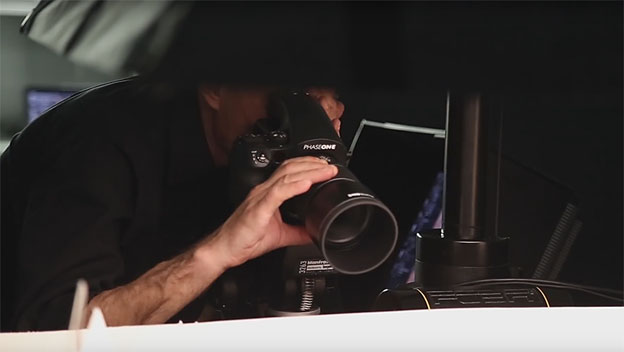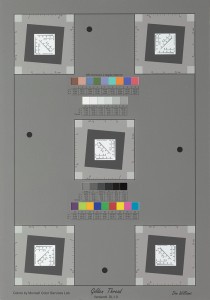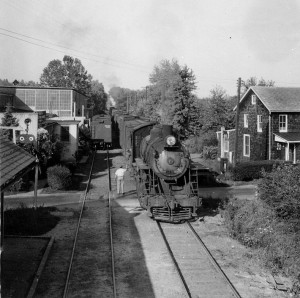Measurably Better Imaging
Creekside Digital is the leading provider of standards-compliant still image digitization services in the United States. Since 2006, we have focused on providing top-quality digitization of microfilm, books, newspapers, photographs, artwork, manuscripts, and objects using the most advanced technology today, as well as developing related software applications. Our state-of-the-art services are delivered by imaging specialists who have many years of experience in photography, software, and technology, and who are passionate about what they do. Our 12,000 square foot facilities are located in Glen Arm, MD, within close proximity of many institutions in the Mid-Atlantic region housing significant collections of the types of materials which we typically digitize. We also commonly deploy equipment and personnel onsite to capture collections and materials which cannot travel to us, either due to condition, security, rarity, or other reasons.

Creekside Digital’s Chris Becker digitizing ancient pottery fragments onsite at the Smithsonian’s Freer | Sackler Galleries (courtesy of Smithsonian Digitization Program Office)
Creekside Digital’s customers include Federal, state, and regional government agencies, large university libraries, public library systems large and small, museums and historical societies, corporate archives and records departments, and similar organizations. For almost ten years, we’ve been one of the strategic scanning partners of LYRASIS, the nation’s largest regional library membership organization for information professionals. Our company has conducted digitization work on some of our nation’s most important and iconic cultural heritage collections, and our efforts have been featured in the Washington Post, Tampa Bay Times, and other national media. We specialize in performing large, complex digitization projects which require the unique combination of photographic knowledge, software expertise, and project management experience we deliver.
FADGI – The Standard for High-Quality Digitization
Image quality is absolutely NOT subjective – in fact, it is well defined and measurable, and frequent measurement and analysis of digitization performance are key to ensuring consistently excellent imaging results. Creekside Digital uses procedures, workflows, and quality metrics defined by the Federal Agencies Digitization Guidelines Initiative, or FADGI. Multiple agencies of the United States Government which perform cultural heritage digitization on a large scale – including the Library of Congress, the National Archives and Records Administration (NARA), and the Smithsonian Institution – maintain these standards, implement them on their own in-house digitization projects, and require that their vendors adhere to them as well. FADGI drives our entire imaging services footprint and governs how we do things on a daily basis. These standards define how to do things the right way, and we take them very seriously.
Just saying “FADGI compliant” isn’t enough as FADGI defines multiple tiers of performance for measuring imaging quality. While the lower tiers are appropriate for basic access images, they don’t approach the consistency and technical fidelity required for true preservation-class imaging – that is, the generation of a digital surrogate which can stand-in for the original item in case of its loss or destruction. The FADGI guidelines themselves state that “in order to avoid future rescanning and given the high costs and effort for digitization projects, FADGI does not recommend digitizing to less than three-star.” Creekside Digital runs its digitization projects at a minimum FADGI 3-Star level performance across all metrics (defined by the FADGI guidelines as “a very good professional image capable of serving for almost all uses”) and verifies this compliance multiple times per day on all imaging platforms. Creekside Digital’s direct capture (non-microfilm) base digitization pricing includes FADGI 3-Star compliance.
Any vendor that is able to consistently able to execute against the FADGI standards should be able to provide a recent scan of a hardware-independent device-level target such as the one above demonstrating their capabilities and awareness of these important Federal quality metrics – please ask for one from us! Creekside Digital has a long, successful, and referenceable track record of the creation of FADGI 3-Star compliant images, as well as some projects which required us to meet the FADGI 4-Star Guidelines – the highest level of technical image quality currently defined by FADGI — both in our facilities and onsite at our customers’ locations. We’re proud of this accomplishment – 4-Star compliant images are tough to achieve, but we’re able to consistently deliver them when they’re required.
NDNP and METS / ALTO XML – Standards for Newspaper Digitization and Metadata
Creekside Digital has successfully completed multiple projects for the National Digital Newspaper Program (NDNP) – a program funded by the National Endowment for the Humanities and administered by the Library of Congress. The NDNP specifications represent arguably the most stringent microfilm digitization standards that exist today. METS / ALTO is a combination of two XML schemas – METS (title-level information) and ALTO (page-level structural information) which is core to NDNP projects and newspaper metadata in general. Creekside Digital has repeatedly demonstrated that we have the experience, project management personnel, and comprehensive knowledge of both the imaging and complex metadata requirements to consistently deliver NDNP-compliant output. We’ve also developed our own software solution, digitalREADER, which allows our customers to bring digitized newspapers and other content online quickly and affordably. From either microfilm or paper, we are your source for high-quality newspaper digitization and metadata services.
Insured for your Protection
We understand that each customer’s project is not only unique, but also may be very valuable. For that reason, we carry insurance which protects each customer’s items while in our facility. With advance notification, we can insure your higher-value project to ensure that your items are protected while in our care — please contact us for details.
Our Guarantee
Creekside Digital guarantees the quality of the digital images provided to the Customer, and will correct, at no additional charge, any problems related to the scanning process only.
What’s in a Name?
We are fortunate to be surrounded by a wealth of history and natural beauty in Baltimore County. Initially, we were located overlooking a small tributary called Towson Run. Originating near the historic village of Providence (no longer in existence), Towson Run meanders through a wonderfully preserved forest of oak, beech, and poplar before meeting the Gunpowder River and eventually flowing into the Chesapeake Bay. Used as a hunting ground for centuries and called the Barrans Property in modern times, this woodlot was saved from impending development and became part of Cromwell Valley Park. Intrepid explorers can still locate the ruins of old barns, sunken roads, and even the foundations of cabins which belonged to freed slaves who once called the area home.
Our current location is in beautiful Glen Arm, MD, in the scenic Long Green Valley Historic District of Baltimore County, about 10 minutes from the Baltimore Beltway. Our building was originally built in the 1870s as a factory that built machinery to print on wooden crates for the F.X. Hooper company. The now-defunct Maryland & Pennsylvania Railroad’s Glen Arm depot, built in 1909, still stands a few yards across the street. In 1958, the Ma & Pa folded and its right-of-way was removed, and in 1960 the Koppers Corporation expanded the building and constructed a large fireproof archives vault of solid concrete which originally served as Creekside Digital’s main imaging studio.


